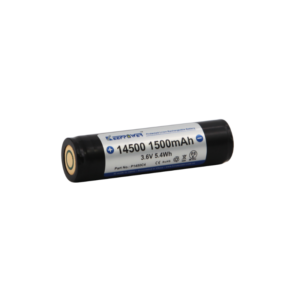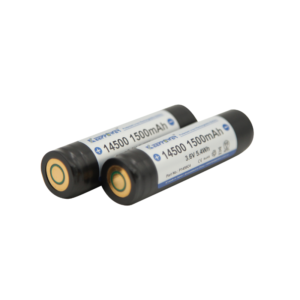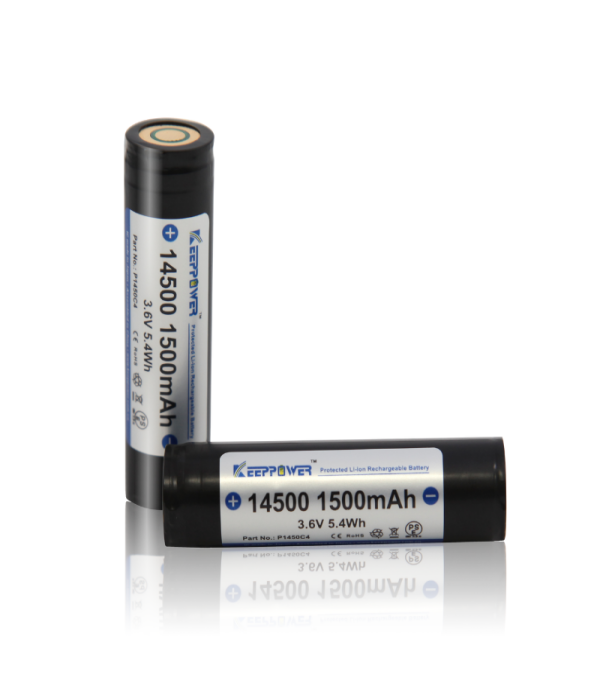In today’s world, flashlights are more than just everyday tools; they are crucial devices for various activities, ranging from outdoor adventures to emergency situations. A key component that ensures the reliability and longevity of flashlights is the protected flashlight battery. These batteries are designed with built-in protection features to prevent common issues such as overcharging and short circuiting—two factors that can significantly damage the battery or even cause safety hazards. In this article, we’ll explore how protected flashlight batteries work and why they’re essential for your flashlight’s performance and safety.

1. What is a Protected Flashlight Battery?
A protected flashlight battery is a type of rechargeable battery that includes an integrated protection circuit. This circuit is responsible for regulating the battery’s charging and discharging processes to ensure the battery operates within safe limits. The protection circuit is typically built into the battery itself or attached to the battery’s casing, offering protection from overcharging, over-discharging, short-circuiting, and other issues that can harm the battery or device.
2. How Do Protected Flashlight Batteries Prevent Overcharging?
Overcharging is one of the most common causes of battery damage. It occurs when a battery continues to charge even after it has reached its full capacity. This can lead to the generation of excess heat, which may cause the battery to swell, leak, or even explode in extreme cases.
Protected flashlight batteries feature an overcharge protection circuit that automatically disconnects the battery from the power source once it reaches its maximum voltage. This circuit ensures that no further current flows into the battery after it is fully charged, preventing overheating and prolonging the battery’s lifespan.
For example, many protected batteries are equipped with a voltage regulator that continuously monitors the battery’s voltage. If the voltage exceeds the safe limit, the protection circuit will immediately cut off the charging process. This prevents any risk of overcharging, ensuring the battery remains in optimal condition for future use.
3. How Do Protected Flashlight Batteries Prevent Short Circuiting?
Short circuiting occurs when there is an unintended connection between the positive and negative terminals of the battery. This can cause the battery to discharge rapidly, creating excessive heat, and potentially leading to battery failure or even fires.
Protected flashlight batteries include a short circuit protection mechanism that can detect and prevent these dangerous situations. If the battery’s internal components come into contact with each other due to damage or faulty wiring, the protection circuit immediately halts the flow of electricity. This minimizes the risk of damage to the battery and surrounding components.
In some cases, if a short circuit is detected, the protection circuit can also activate a cut-off feature, which completely disconnects the battery from the flashlight’s circuit. This ensures that the flashlight will not function until the issue is resolved, safeguarding both the device and the user.

4. Additional Benefits of Protected Flashlight Batteries
Beyond overcharging and short-circuit prevention, protected flashlight batteries offer several other advantages:
- Over-discharge Protection: These batteries prevent the battery from discharging too much, which can lead to capacity loss or battery failure. This feature ensures that the battery maintains optimal performance throughout its lifespan.
- Thermal Protection: Some protected flashlight batteries are equipped with temperature sensors that monitor the battery’s temperature during charging and discharging. If the temperature rises above a safe threshold, the protection circuit will cut off the power to avoid overheating.
- Increased Lifespan: By protecting the battery from common issues like overcharging, short circuiting, and over-discharge, protected flashlight batteries tend to last longer, providing better value over time.
- Improved Safety: Flashlights often face rough conditions, especially in outdoor environments. The protection circuit adds an extra layer of safety, making these batteries safer to use in potentially hazardous situations.
5. Why You Should Use Protected Flashlight Batteries
Using a protected flashlight battery is a wise choice for anyone who relies on flashlights for daily or emergency use. The added protection features ensure the battery remains safe, reliable, and effective over time. These batteries not only offer enhanced performance but also provide peace of mind, knowing your flashlight is unlikely to malfunction due to overcharging or short circuiting.
Additionally, if you’re using a flashlight for critical tasks, such as camping or during power outages, the last thing you want is a malfunctioning battery. Protected flashlight batteries ensure that your flashlight remains operational, even in challenging conditions, and can keep you prepared in case of an emergency.

6. Conclusion
In conclusion, protected flashlight batteries are essential for anyone looking to get the most out of their flashlight. They provide invaluable protection against overcharging, short circuiting, and other issues that can damage the battery or cause unsafe conditions. By incorporating a built-in protection circuit, these batteries improve the safety, longevity, and overall performance of your flashlight, ensuring that it operates reliably whenever you need it.
For optimal results, always choose a flashlight that is compatible with protected flashlight batteries to maximize the lifespan and safety of both your device and the battery itself.

